Hi there! The blog is back with a trip that will take us through Bolivia and Brazil! I leave Cusco in a very comfortable night bus, even yep yep yep can sleep with his legs totally stretched out!
After crossing the border with Bolivia, I arrive at Copacabana mid-morning. The intention was to continue towards Sorata, but Lake Titicaca is like a magnet with its incredible bluish tones, and I decide to spend the night in the town. I take the opportunity to climb to the top of Calvario and eat lake trout in the popular dining room (“comedor popular”).
 |
| Views from cerro Kesanani |
The next morning I go up to the “ inca gallows” or pachataka . In fact, the Spanish mistranslated it, since in Aymara it means “place where time is measured.” The “chiripa” culture, in 1500 a. C. already used this site as an astronomical observation place of the solstices, of the seasons and to predict eclipses. I continue climbing between rocks with strange shapes until I reach the top of Kesanani, at 3990 meters. The view of Copacabana and the lake is spectacular!
La Paz and its surroundings
My intention was to go to Sorata, a place surrounded by mountains and glaciers. But the rainy season this year is very powerful and the forecast looks terrible, so I decide to go to La Paz. If you want to see mountains and blue skies, avoid traveling here from December to March, as it is the rainy season, or travel slowly to take advantage of the good weather windows.
 |
| La Paz cable cars |
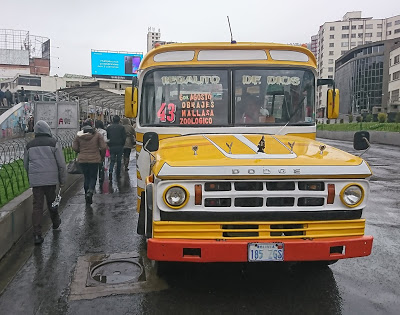 |
| Curious buses from La Paz |
 |
| Women selling Moraya and Chuño in La Paz |
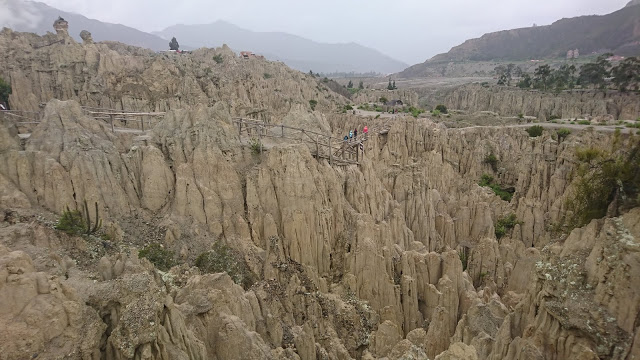 |
| Valle de la Luna |
But my favorite excursion is the “valle de las ánimas”. From the center, I take bus 42 (or 48) to go to Ovejuyo, at 3700 m. From here you go up, following the river that has eroded the rocks, creating spectacular jagged shapes. Higher up, the valley narrows and continues through some potato fields that have a privileged view.
You continue climbing along a track, and you reach a ridge at 4,350 meters with an impressive view of hundreds of rock needles and the city of La Paz in the background. I go down a valley a little further north, that has a wide river and a few people from La Paz who take advantage of Sunday to walk their dogs.
You can find the track of this fantastic day trip here: https://ca.wikiloc.com/rutes-senderisme/valle-de-las-animas-97635868
To get out of the city a little more, I decide to sign up for the “Death road” tour, a road that once had an average of 100 deaths per year but now is quite safe. With two guides from the Barracuda company, some English, some Australians and a Brazilian, we biked down from 4,600 meters to 1,200 meters. The road currently has no traffic, it is like a green path with 600-meter precipices and spectacular waterfalls. The experience is quite touristy but fun.
I take the opportunity to stay in the little town of Coroico and enjoy the heat while people give the talk sitting in the street. This region is called Yungas, it is the forest between the mountains and the jungle.
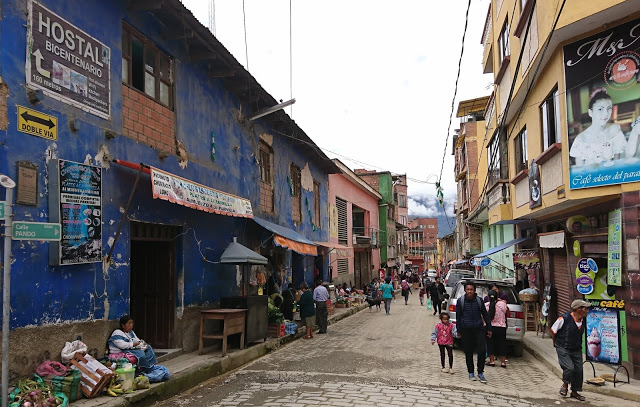 |
| A street in Coroico |
You can see more photos here: photos of Copacabana and La Paz
This is all for now, see you soon!

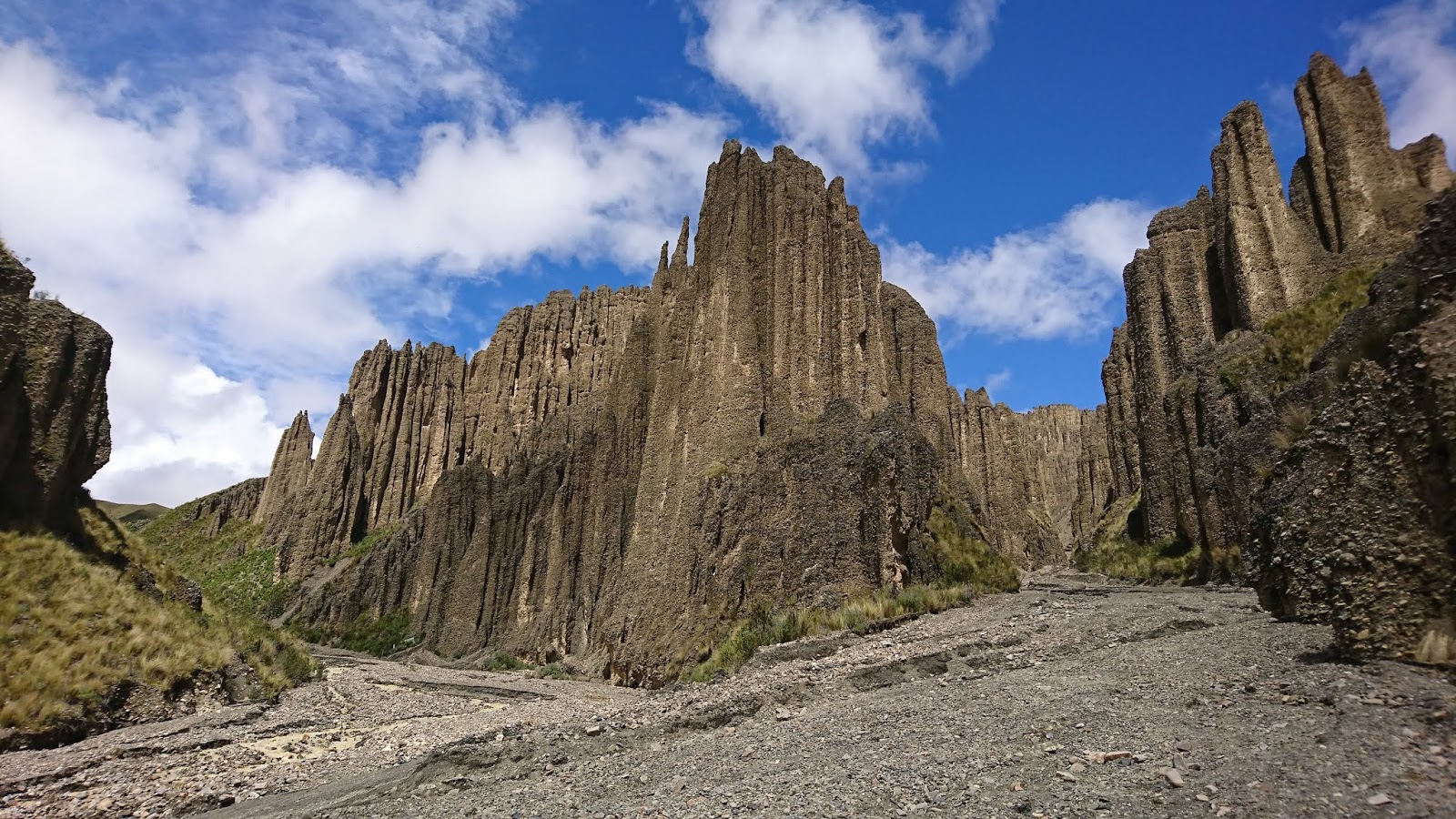

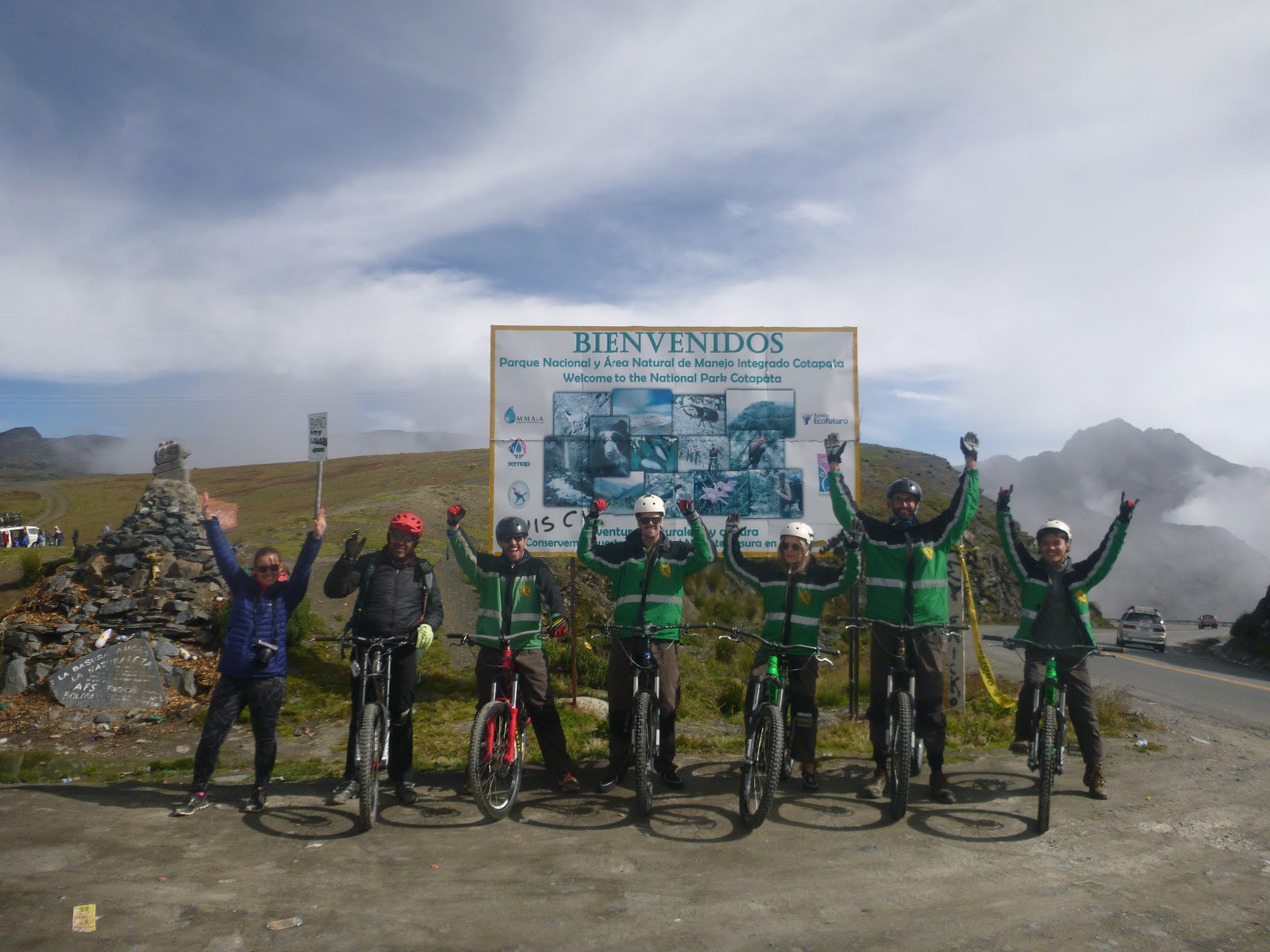

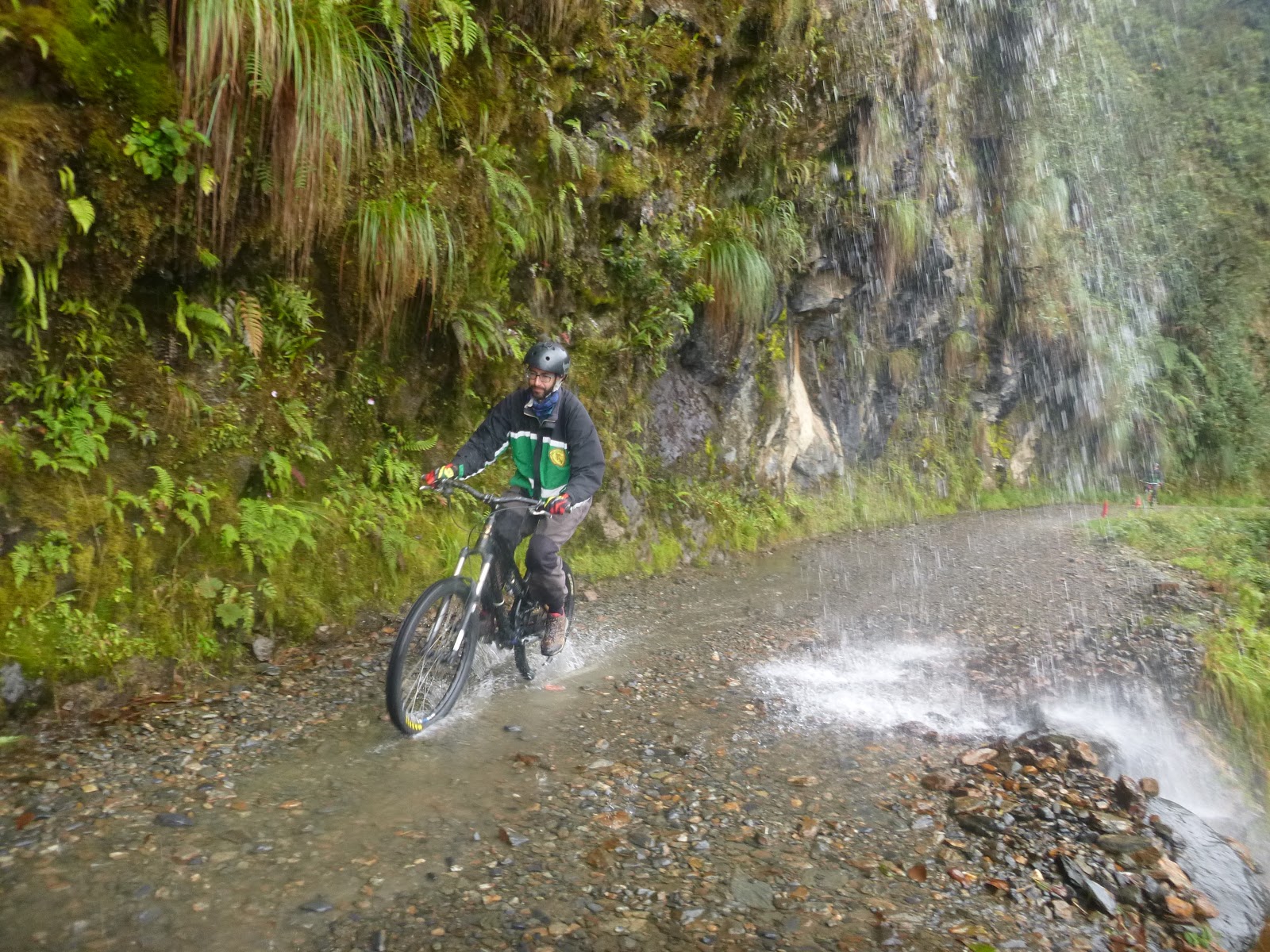
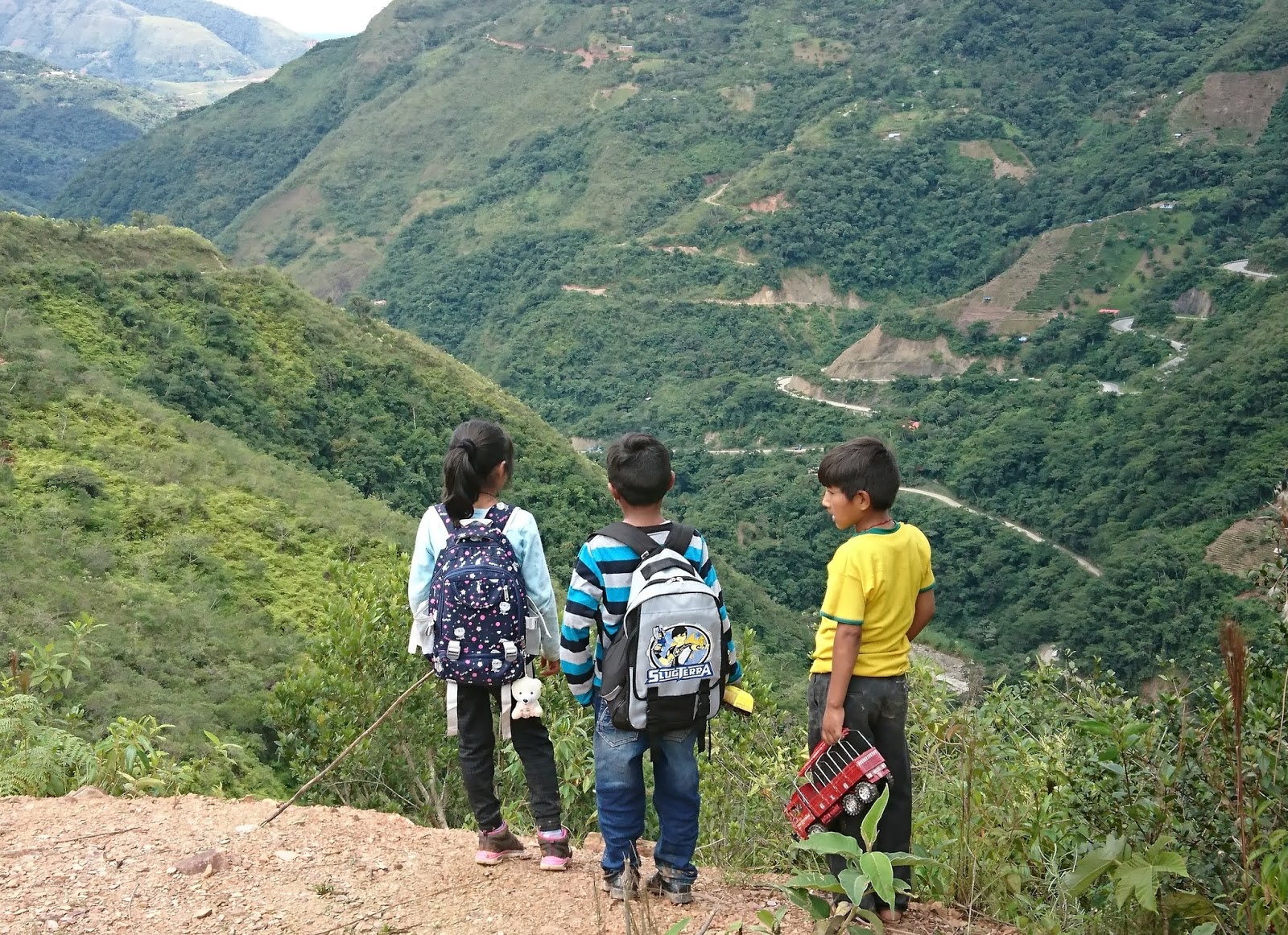

Leave a Reply